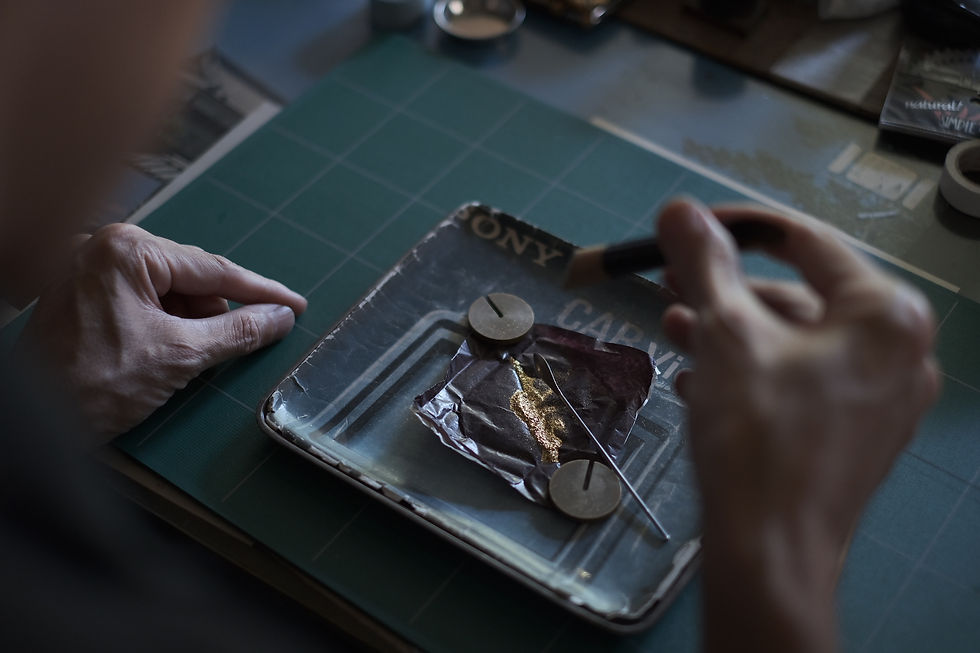
Kanazawa is a city known for its rich history, beautiful landscapes, and incredible craftsmanship. While many visitors come to admire Kenrokuen Garden, Kanazawa Castle, and the samurai districts, there’s another unique experience that is deeply rooted in Japanese culture—Kintsugi.
Kintsugi, or “golden joinery,” is the traditional Japanese art of repairing broken pottery with lacquer and gold. This practice turns broken ceramics into beautiful, one-of-a-kind pieces, embodying the philosophy of embracing imperfections.
If you’re looking for an authentic and memorable cultural experience, a Kintsugi workshop in Kanazawa is one of the best activities to add to your itinerary. In this guide, we’ll explore why Kintsugi is a must-try experience and how you can take part in this beautiful tradition.
■ Table of Contents
What is Kintsugi? A Japanese Art with Deep Meaning
Why Experience Kintsugi in Kanazawa?
What to Expect in a Kintsugi Workshop?
Tips for Enjoying Your Kintsugi Experience in Kanazawa
Two recommended facilities in Kanazawa where you can experience Kintsugi
Conclusion: A Must-Do Cultural Experience in Kanazawa

■ What is Kintsugi? A Japanese Art with Deep Meaning
Kintsugi is said to be originated in Japan over 400 years ago as a method to repair broken ceramics while enhancing their beauty. Instead of discarding damaged pottery, artisans use urushi lacquer and gold dust to mend the cracks, creating unique patterns that highlight the breakage rather than hiding it.
This art form is closely linked to wabi-sabi, a Japanese aesthetic that finds beauty in imperfection and impermanence. Kintsugi teaches us that flaws and scars are not something to be ashamed of but rather something to celebrate.
For travelers, learning Kintsugi in Kanazawa is more than just a hands-on activity—it’s an opportunity to experience a deeper aspect of Japanese culture.

■ Why Experience Kintsugi in Kanazawa?
Kanazawa is one of Japan’s best places to experience traditional craftsmanship, making it the perfect location for a Kintsugi workshop. Here’s why:
1. Kanazawa is a City of Crafts and Artisans
Kanazawa has a long history of exquisite craftsmanship, from gold leaf production to Kutani pottery. The city has been recognized as a UNESCO Creative City of Crafts and Folk Art, making it an ideal place to learn Kintsugi from skilled artisans.
2. The Connection to Gold
Did you know that Kanazawa produces 99% of Japan’s gold leaf? The name “Kanazawa” literally means “Marsh of Gold,” and the city has a deep historical connection to gold craftsmanship. Since Kintsugi uses gold to repair ceramics, Kanazawa is the perfect place to experience this art form.
3. A Meaningful and Unique Souvenir
Unlike typical souvenirs, a Kintsugi-repaired ceramic piece is something personal and meaningful. It carries a story—a once-broken object that has been beautifully restored. This makes it a one-of-a-kind memory from your trip to Kanazawa.
4. A Relaxing and Mindful Experience
Kintsugi is a slow and meditative process. Sitting down and carefully applying lacquer requires patience and focus, making it a wonderful way to relax and appreciate Japanese culture.

■ What to Expect in a Kintsugi Workshop?
A typical Kintsugi workshop in Kanazawa includes:
1. Introduction to Kintsugi – Learn the history and philosophy behind the art.
2. Choosing a Broken Piece – Select a ceramic item that needs repair.
3. Applying Urushi Lacquer – Carefully glue the broken pieces together with traditional Japanese lacquer.
4. Dusting with Gold Powder – Once the lacquer is dry, gold powder is applied to highlight the cracks.
5. Final Touches – The finished piece is polished and ready to take home!
Most workshops provide all materials and step-by-step instructions, making it easy for beginners to enjoy the process.

■ Tips for Enjoying Your Kintsugi Experience in Kanazawa
• Book in Advance – Kintsugi workshops are popular, especially among tourists, so it’s best to reserve your spot online before visiting.
• Wear Comfortable Clothes – The process involves lacquer, which can be sticky, so avoid wearing your favorite outfit.
• Be Patient – Traditional Kintsugi takes weeks to fully cure, but workshops use a faster method that allows you to take your piece home the same day or within a week in maximum.
• Explore More Crafts – Kanazawa is full of traditional craft studios, gold leaf shops, and pottery galleries, making it a great place to deepen your appreciation for Japanese craftsmanship.
■ Two recommended facilities in Kanazawa where you can experience Kintsugi
IN KANAZAWA HOUSE : https://bit.ly/4irTn5z
The kintsugi experience offered by IN KANAZAWA HOUSE is provided by the third generation of maki-e craftsmen, whose skills have been passed down from generation to generation, in their own atelier. The experience is not limited to kintsugi, but also includes the opportunity to ask questions about maki-e, making it an in-depth experience.
Kintsugian : https://bit.ly/424Dhcc
You can learn kintsugi from young kintsugi artists in a modern and stylish workshop. The owner is fluent in English and Spanish, so you can enjoy direct conversation with him without an interpreter while he creates wonderful works of art.
■ Conclusion: A Must-Do Cultural Experience in Kanazawa
If you’re looking for a unique and meaningful cultural activity in Kanazawa, a Kintsugi experience is highly recommended. Not only will you learn a traditional Japanese art form, but you’ll also gain a new perspective on beauty, resilience, and imperfection.
By taking part in a Kintsugi workshop, you’ll create a one-of-a-kind souvenir that tells a story—just like the city of Kanazawa itself, where history, art, and craftsmanship come together beautifully.
So, next time you visit Kanazawa, why not try Kintsugi and take home a golden memory?